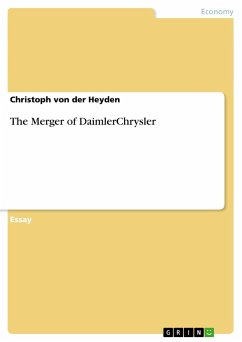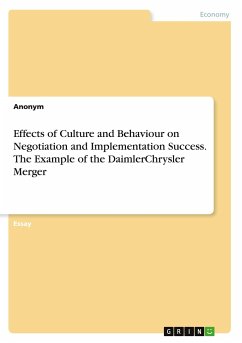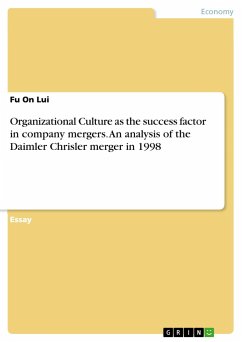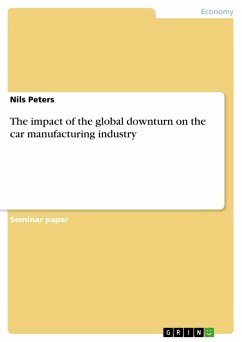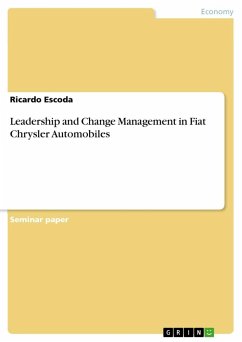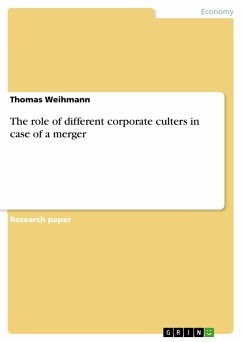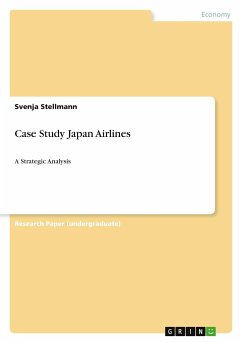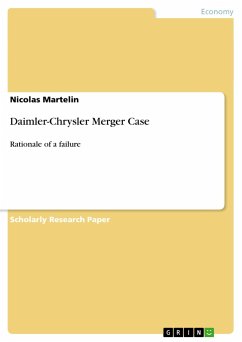
Daimler-Chrysler Merger Case
Rationale of a failure

PAYBACK Punkte
0 °P sammeln!
Research Paper (undergraduate) from the year 2008 in the subject Business economics - Business Management, Corporate Governance, grade: A-, International School of Management Dortmund , language: English, abstract: Back in 1998, Daimler-Benz, the German manufacturer of luxury automobiles, had only captured less than one percent of the American market (Daimler-Benz AG, Standard & Poor's Stock Reports. New York: Standard & Poor's, Inc., July 21, 1997). Meanwhile, the American Chrysler Corporation was willing to extend its international reach, especially in Europe. Given the circumstances, both c...
Research Paper (undergraduate) from the year 2008 in the subject Business economics - Business Management, Corporate Governance, grade: A-, International School of Management Dortmund , language: English, abstract: Back in 1998, Daimler-Benz, the German manufacturer of luxury automobiles, had only captured less than one percent of the American market (Daimler-Benz AG, Standard & Poor's Stock Reports. New York: Standard & Poor's, Inc., July 21, 1997). Meanwhile, the American Chrysler Corporation was willing to extend its international reach, especially in Europe. Given the circumstances, both companies came to the conclusion that a merger would make sense. On May 7th, 1998, the merger was o cially announced as the largest trans-Atlantic merger ever. However, this buyout - which could have led to the creation of the greatest car manufacturer in the world - had failed in less that ten years. On May 14, 2007, the DaimlerChrysler company was already a thing of the past. Almost two years after the sale of Chrysler, a question remains: Why the merger failed? If we compare a merger to a marriage, we would say that they married the wrong persons. But how managers and executives from the two companies has gotten it so wrong?




